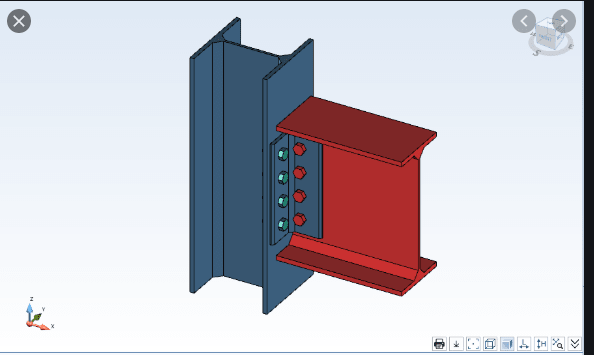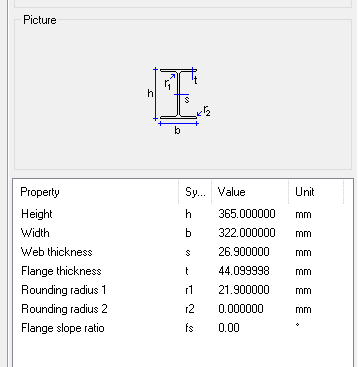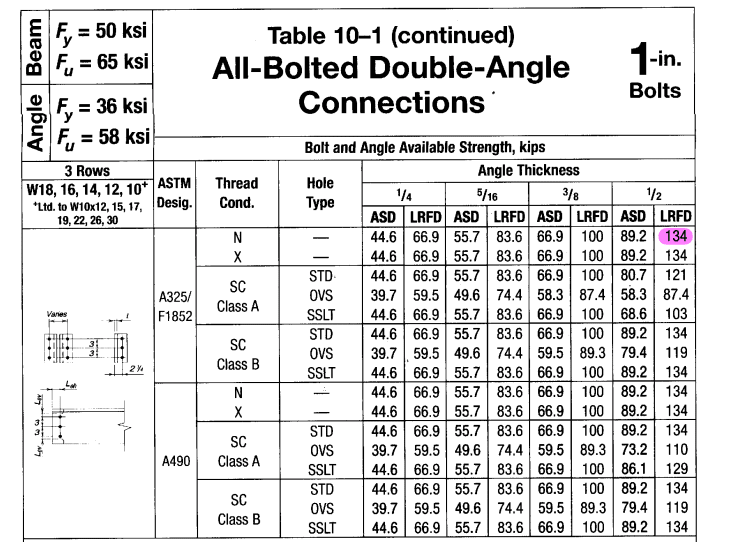Veer007
Civil/Environmental
- Sep 7, 2016
- 379
Hey Guys, so far I have my w-beam profile as W310X283(W12X190 imperial equivalent), Which has 26.9mm as web thickness seems little high, Can I go with 16mm thick clip angle since I have to provide header angle (double angle) connection, so I have framing angle thickness 16+16=32mm which is higher than beam web thickness, and I am using 1"Ø A325N connection bolts.
or Can I have to increase more than this? One more thing i have to consider the yield stress of w-section is 350 N/mm2 but framing angle has 300 N/mm2
Also as far as i have seen in AISC which doesn't refer more thickness of header angles while beam profile is heavy, please provide your valuable comments for this one.


Thanks in advance!!
or Can I have to increase more than this? One more thing i have to consider the yield stress of w-section is 350 N/mm2 but framing angle has 300 N/mm2
Also as far as i have seen in AISC which doesn't refer more thickness of header angles while beam profile is heavy, please provide your valuable comments for this one.


Thanks in advance!!

